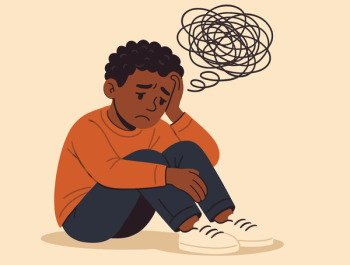
A New Approach to Reducing Suicide Risk Among Veterans
New data from the Suicide and Trauma Reduction Initiative for Veterans at Ohio State University indicates the most effective interventions to prevent suicide risk among veterans.
For decades, the psychiatric community has been working to understand more about the link between posttraumatic stress disorder (PTSD) and suicidal ideation in veterans. Thanks to forthcoming results of a research study from
Since the first World War and even before, we have been grappling with the effects of PTSD, even if we did not know what it was. At first, it was called shell shock syndrome, combat fatigue, or referred to as the “thousand-yard stare.” It was not until the third edition of the DSM in 1980 that we began using the term
Unfortunately, that link is a very strong one. According to the
To understand more about how we can help our veterans, Ohio State formed the
When I was working in the military, I was not satisfied by the treatments being offered to veterans. I wanted to ensure that we were providing the best care possible for those who needed it. In existing studies and trauma literature, efficacy rates were unacceptable. Recent studies seemed to be about 50% effective for PTSD treatment, which indicates huge room for improvement.2 That improvement has become one of the main goals of STRIVE.
In a soon-to-be-released study, we sought to determine whether a different strategy—a compressed model that combines multiple treatment approaches—could lead to better results for patients. Although our findings will require replication in further studies to ensure viability, we feel that we have uncovered valuable insights regarding the effectiveness of this strategy in 5 key areas.
A Concentrated Approach
Typically, treatment of a veteran showing PTSD symptoms would come in weekly 1-hour cognitive processing therapy (CPT) sessions over 10 to 14 weeks. As many who have served will understand, 3 months can be a very long time when treating a patient at risk of suicidal ideation. That is why Craig Bryan wondered if we could speed up the process.
Rather than an elongated process that requires valuable time, we condensed 12 sessions of content into 10 sessions and held those sessions daily rather than weekly, creating a 2-week program that combined some modules and delivered the same content that normally takes 3 months.
One of the 4 symptom clusters3 of PTSD is avoidance—a symptom that in part sustains the other 3. We realized that it is very difficult to engage in avoidance if you are seeing your therapist every day rather than once a week.
What we came to find is that this condensed model is not only just as effective as the 3-month model, it may actually be more effective.4 This concentrated approach provides an element of ripping the band-aid off quickly, allowing us to dive into the issues that we need to address and provide symptom relief sooner.
Combined Treatments
Traditional treatment approaches for individuals with PTSD include CPT, which has shown effectiveness in reducing both PTSD and suicidal ideation symptoms.5 But recently, Craig Bryan developed what we call our crisis response plan (CRP), which was specifically developed for members of the military and subsequently adapted to other populations to include civilians.
CRP is a short
In the past, there has been a thought that starting treatment for PTSD with those also struggling with suicide may exacerbate their suicidality and lead to worsening symptoms and patient outcomes. That has resulted in many patients with PTSD and elevated suicide risk to simply linger on the fringes, not getting the care they need.
We tried the opposite approach, implementing both treatments at once from the very beginning. What we found is that you can manage both, and very quickly mitigate a patient’s suicide risk while also delivering PTSD treatment. That manages risk in a way that many providers are not yet aware of, leading to better results from both the PTSD and suicidal ideation groups.
Including High-Risk Patients
Many previous PTSD studies have suffered from a bit of a paradox.
Historically, PTSD trials have had a rule that if a patient was high-risk or had suicidal ideations, they were not to be included in the study. This means that much of the existing research did not include the highest risk individuals, essentially hindering our ability to know and better understand how to best treat this vulnerable population. Further, many who receive PTSD treatment, regardless of if they present with suicidal ideations at the outset of treatment, go on to experience suicidal ideations about 6 months after completing therapy.
STRIVE’s primary purpose is to be a suicide prevention lab, so we wanted to understand why this increase in suicidal ideations occurs and whether we could lessen it. One of our first points of differentiation was to stop ruling out the patients with existing
Often, risk management for these patients has included steps like inpatient hospitalization or medication management. But those methods do not have great success in risk management. This can result in inadvertently exacerbating the potential cause of suicide while we try to manage risks, which is obviously counterproductive. If we know that intensive treatment is likely to make them better, why withhold it?
Starting Treatment Earlier
There is sometimes a notion in psychiatry that we need to work a patient up toward receiving evidence-based care, that we need to “get them ready” for the real treatment. This can come in the form of 5 or 6 sessions to assess whether a patient can handle therapy or whether they are committed to the process.6 These are often more supportive, unstructured therapies that aim not to reduce PTSD symptoms, but to gauge patient readiness.
We decided to skip that process altogether. There are studies that show strategies like prep sessions do not actually improve patient outcomes, which to us indicates that those strategies are simply delaying the treatment that we know can work.
In our study, we provided an intensive, 2-week model with zero prep sessions outside of an eligibility interview to ensure that they had PTSD—that was the only meeting we had with them before treatment began.
We not only found that it was not harmful to skip those prep sessions, it allowed us to start necessary treatment sooner. We also saw a dropout rate of about 10%, which is very low for this type of study, a possible indication that the lack of prep sessions does not push out potential participants. With this kind of population, we do not feel that there is time to waste on unnecessary steps.
Offering Coping Tools
There is not a clear causal link between PTSD and suicidal ideation, but there is certainly a correlation, and many patients who struggle with PTSD are also struggling with suicidal thoughts.
Sometimes, those tendencies can be missed, and it is crucial to ensure that, even if a patient does not openly say they are struggling, providers ensure that they are asking the right questions and doing a deep dive into the possibility.
We demonstrate in our upcoming study that some patients who did not report suicide ideation or suicide attempts would go on to report them later, even after they were done with treatments. That indicates that there may still be cause to put some of these tools in place, even if they are not initially disclosing their suicidal thoughts.
In our study, we gave all participants — even those who did not express ideations or a recent attempt—a CRP, which provided an important tool for those that developed those thoughts later on, even if they were no longer in treatment with us.
We know that suicide is episodic and often context-specific. Perhaps a patient did not show risk factors while with us, but when they face a breakup 6 weeks later and are no longer in treatment, they begin to develop suicidal thoughts. If that is the case, they have been given a tool in the form of CRP that can actually help them understand how to cope with what they are feeling.
Concluding Thoughts
The results of our study support the effectiveness of CRP for rapidly reducing suicidal ideation among patients receiving massed therapy for PTSD in outpatient clinical settings.
It is our hope that, as we continue to learn more about effective treatments and intervention strategies, we can continue to reduce suicidal ideation and attempts across patient subgroups and in a variety of clinical settings.
Dr Baker is an assistant professor in the Department of Psychiatry & Behavioral Health, and clinical director of the Suicide and Trauma Reduction Initiative (STRIVE) at The Ohio State University.
References
1. National Veteran Suicide Prevention Annual Report 2022. U.S. Department of Veterans Affairs. September 2022. Accessed October 9, 2023.
2. Sansom W. Treatment for combat-related PTSD advances with method shown to be fast, effective. The University of Texas Health Science Center at San Antonio. January 5, 2023. Accessed October 9, 2023.
3. Posttraumatic stress disorder. American Psychiatric Association. 2013. Accessed October 9, 2023.
4. Bryan CJ, Russell HA, Bryan AO, et al.
5. PTSD: National Center for PTSD. U.S. Department of Veterans Affairs. Accessed October 9, 2023.
6. Roberge EM, Harris JA, Weinstein HR, Rozek DC.
Newsletter
Receive trusted psychiatric news, expert analysis, and clinical insights — subscribe today to support your practice and your patients.














